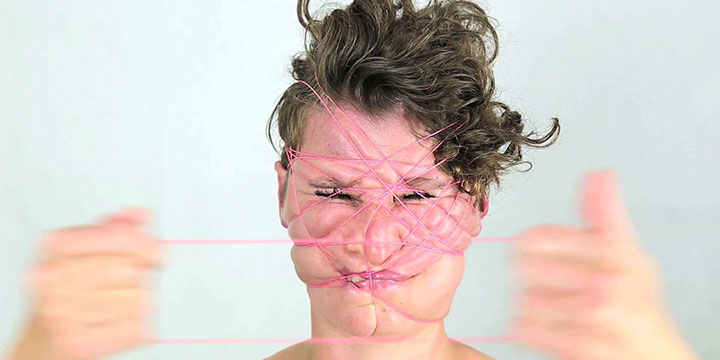Marty St James
Adagio No 8
| Artist | Marty St James |
| Year | 2011 |
| Duration | 9:30 min |
| Edition | . . Music: Roberto Filoseta, Dance: Iveta Petrakova |
| Technical info | single-channel digital video projection, HD video, colour, sound |
| Contact | |
About the video
"Adagio No 8" is a Kaleidoscope of movement, a visual dance, a portrait, an assemblage. I set myself the challenge of working with the figure within a classical form, physical landscape through the use of moving image, digital media, sound and drawing.
I have always considered my drawings as types of kaleidoscopes of thought, tunnels of thinking and time-based moving image works as navigations across time and through space in different and innovative ways. All of my art works I refer to as types of portraits of both others and myself. The curator Matthew Shaul suggested that ‘His (St. James) work then is perhaps an attempt to map this new grammar and to provide new understandings of identity and portraiture appropriate to the digital age’(1).
In 1990 I made a large multi-screen video installation called "The Dancer"(2), working with an Indian Bharata dancer. Prior to this I was a Performance Artist using and exploring social elements through movement and audience relationship in real time and space.
I can understand Renoir’s obsession with ballet but sense that the pure physical effort is something opaque. Also the mental strength needed (shown up recently in the Hollywood film "Black Swan") as being a very real obstacle course of ambition and drive.
With these new works I wanted to consider the formal classical movements of ballet within the virtual and actual landscape of new technology but through my ever-present interest in portraiture used and considered within the widest sense of the term. In many ways the presence, physical ability and attitude of the person in the new works (Iveta Petrakova, Czech ballet dancer) interested me more than the dance itself as I found her own personal history deeply involved in this classical performance dance form. As Yeats suggested the two are possibly intertwined, ‘O body swayed to music, O brightening glance, how can we know the dancer from the dance?’(3)
The language of Ballet is to me a mystifying and magnificent experience encased within extreme formal physical movements. To consider it through the lens is for me a type of Alice in Wonderland experience, falling through a tunnel of visual fear and the unfamiliar. The challenge was to put together all of these different elements (digital image, the formal and precise movements, the person, the sound etc.) to deal with this as a starting point for exploration within my chosen medium. And at the same time locate another series of forms in which the ideas and images could be suspended within the current digital media and software against the more traditional aspects of paper. In neither do I see a hierarchical difference.
In a sense I suggest these issues as symptomatic of my working processes and thinking, i.e. relating to the past whilst attempting the future.
Marty St James, May 2011
(1) "You, Me and It" Marty St. James (UK 2011) exhibition catalogue, Matthew Shaul
text p. 27, ISBN 978-0-9550478-8-6
(2) "Dancer, The" (collar: Anne Wilson) Marty St. James, 1990, 14 screens, 14 min., video, colour, sound. Sitter: Shobana Jeyasingh. First exhibited: Camden Arts Centre, London
(3) William Butler Yeats "Among School Children" (1926)




























